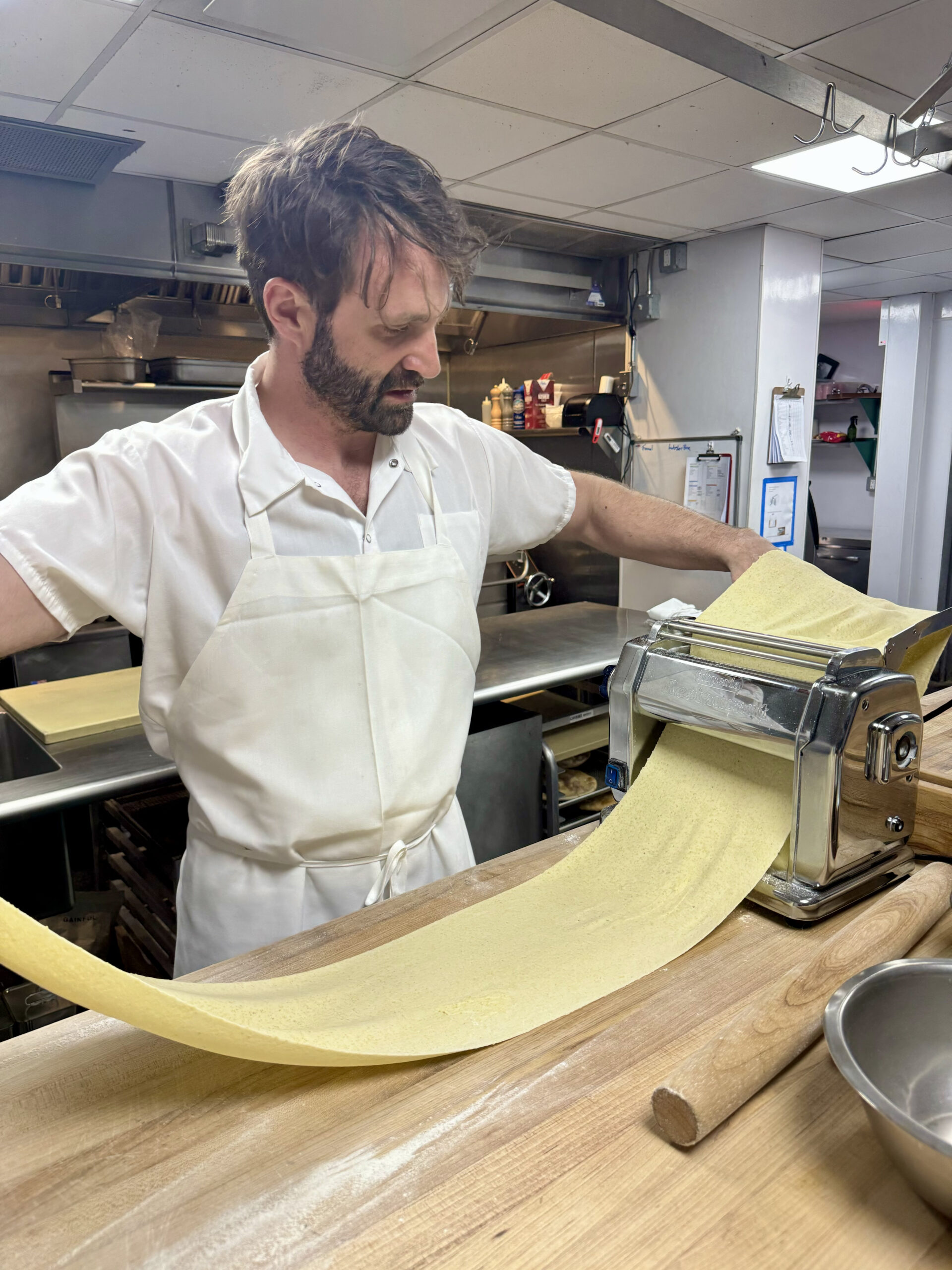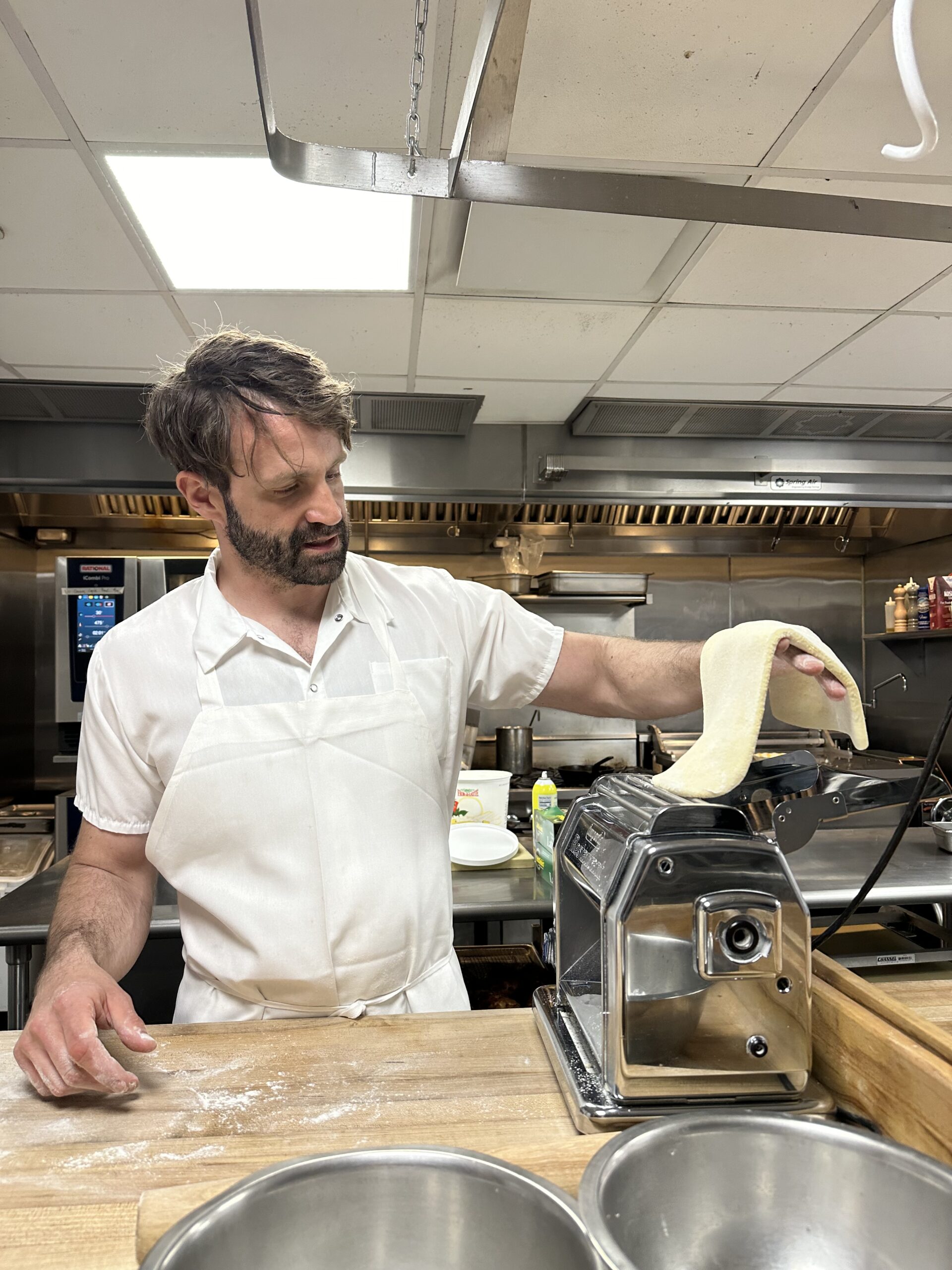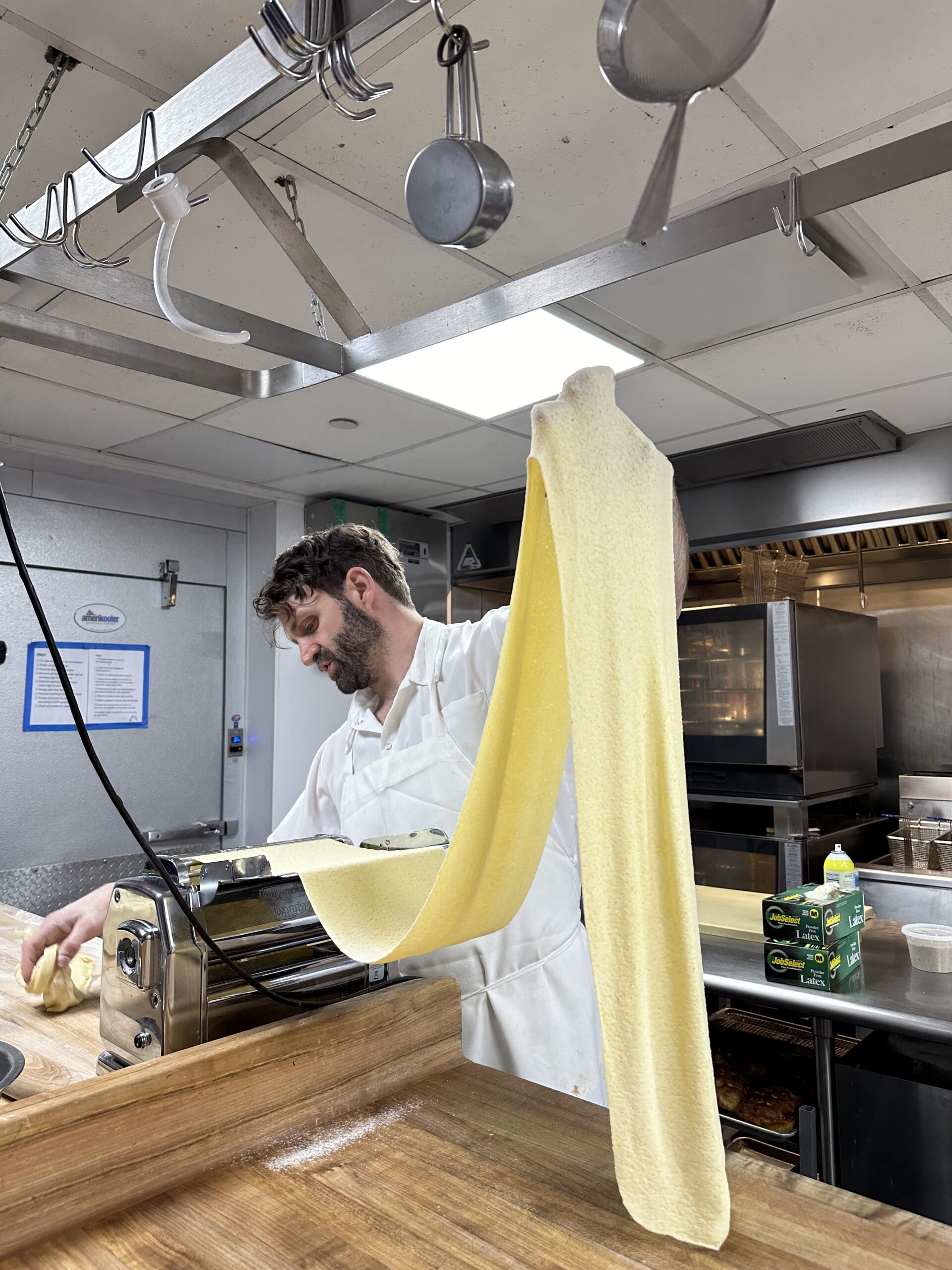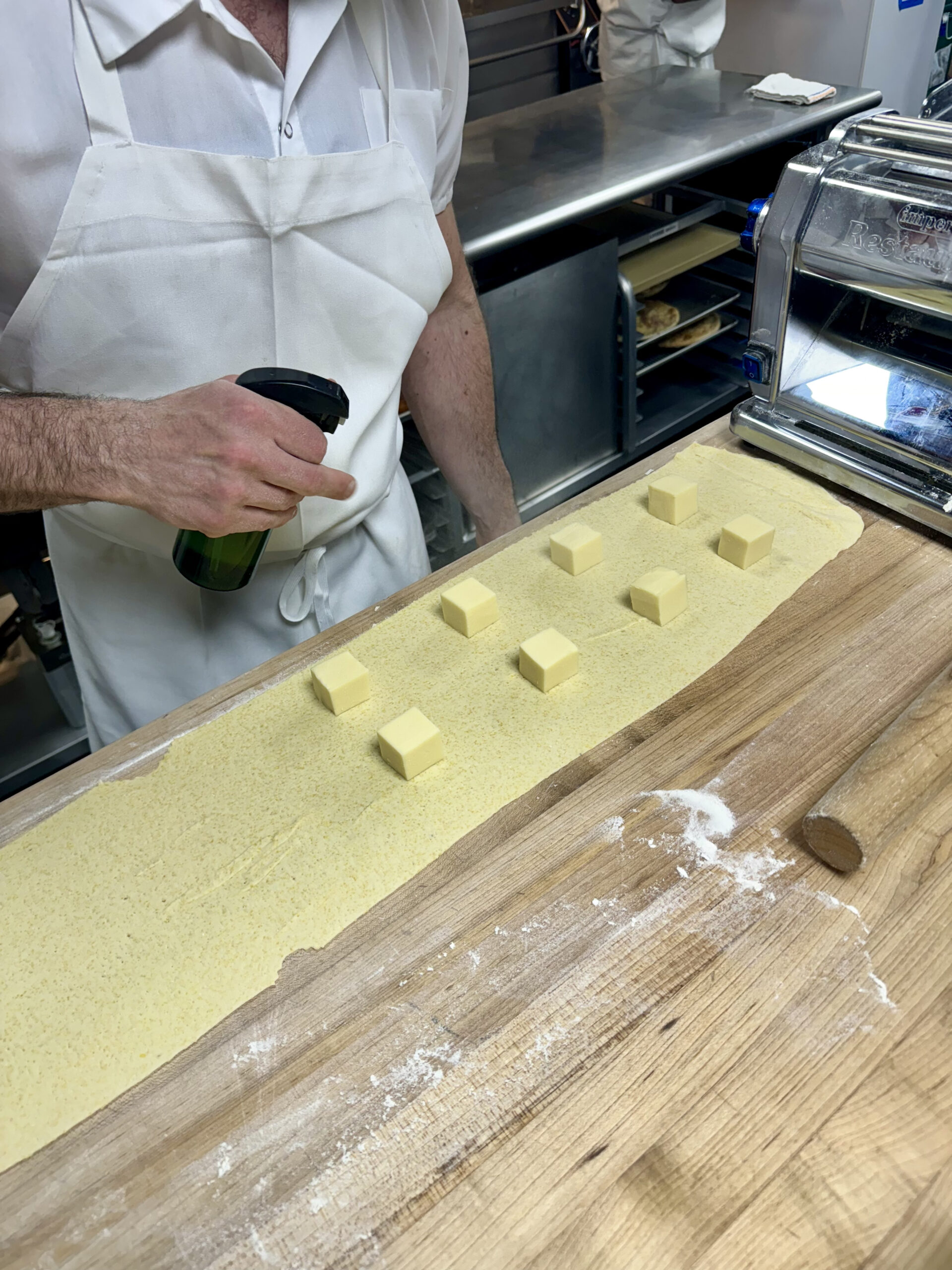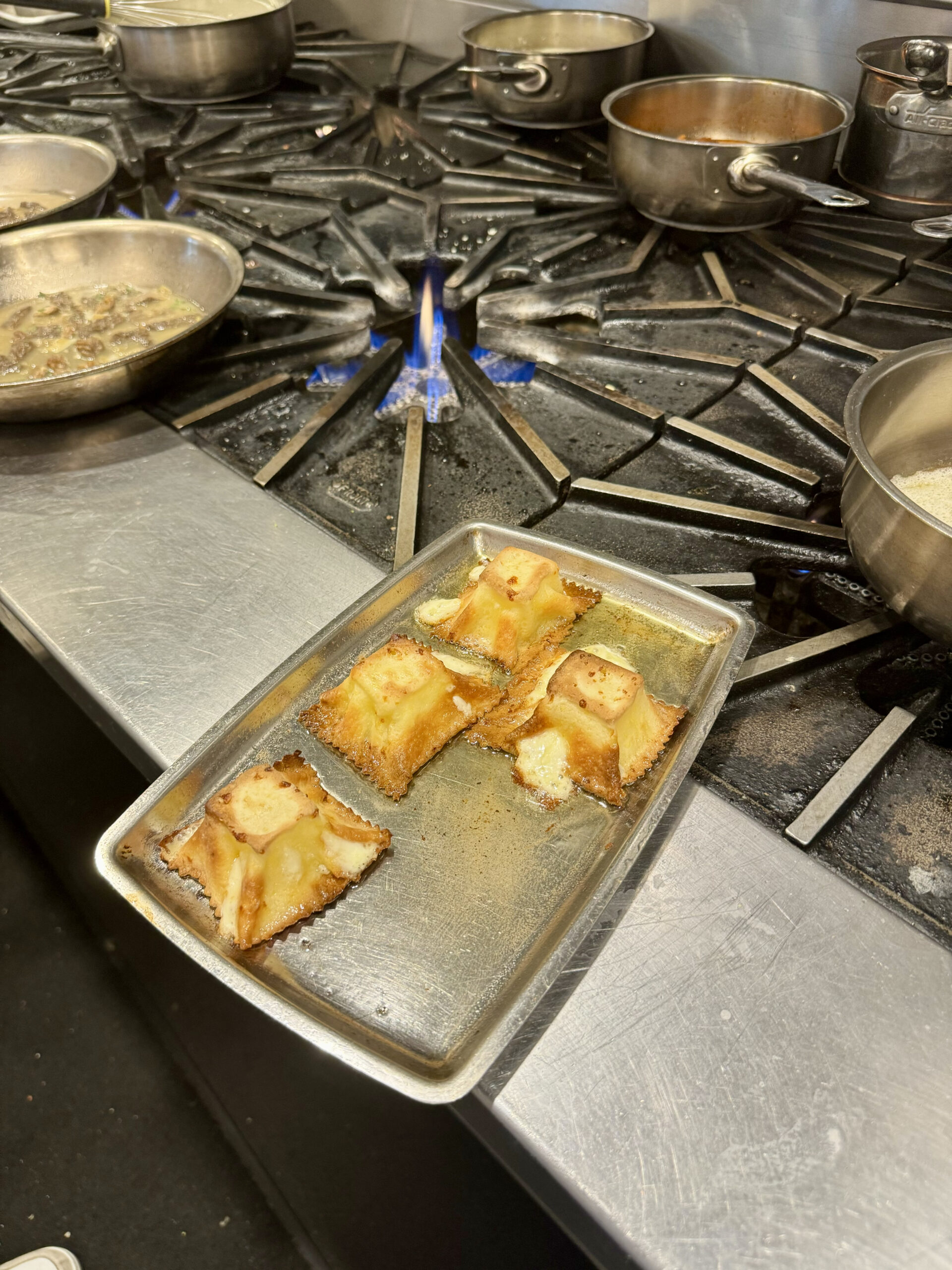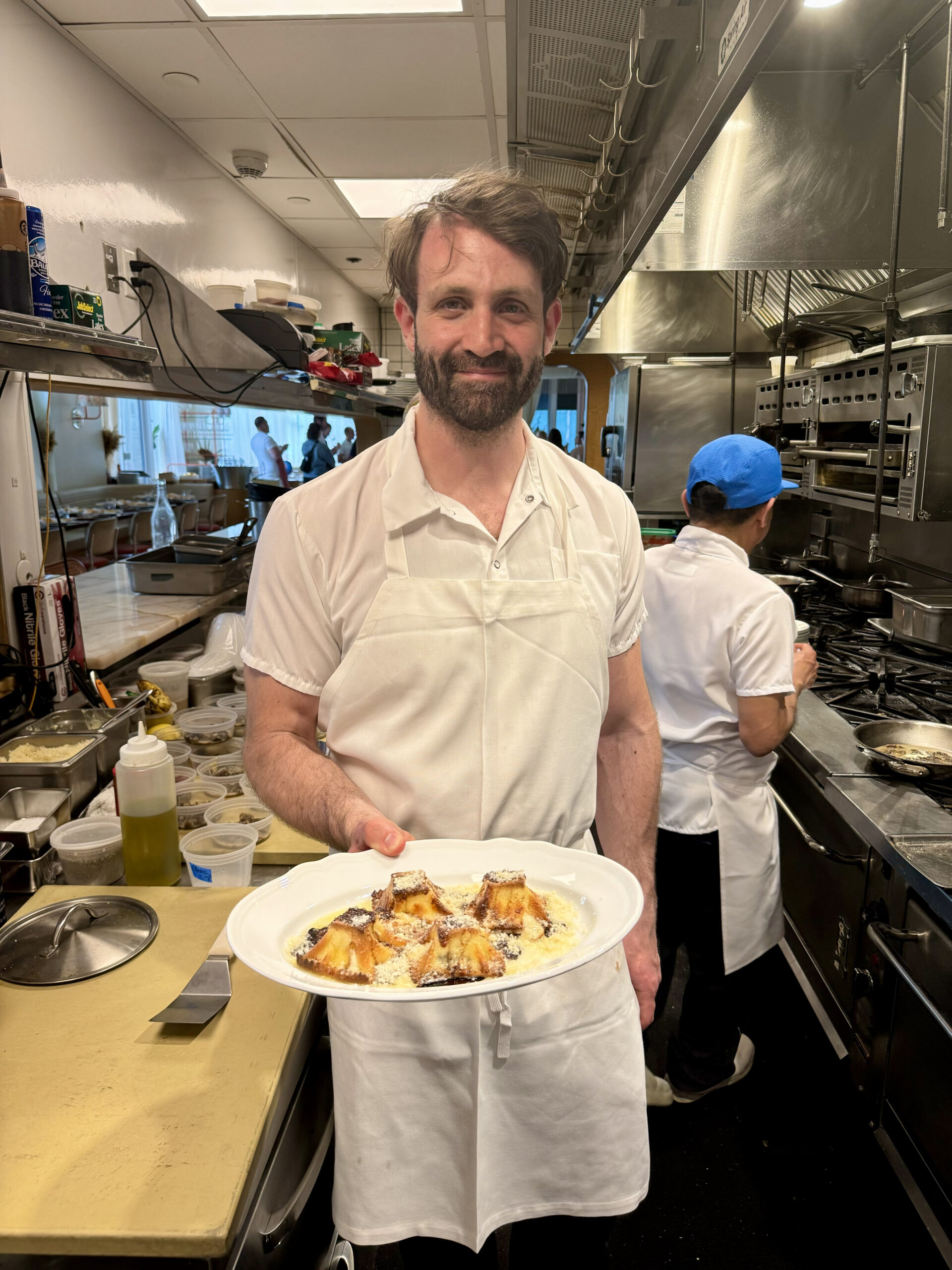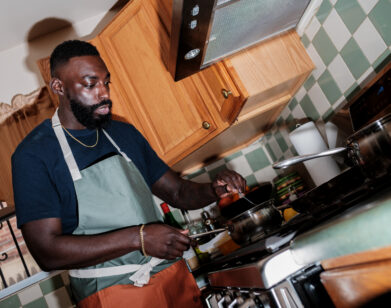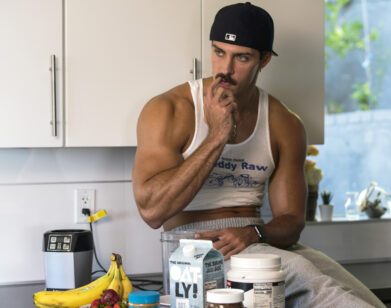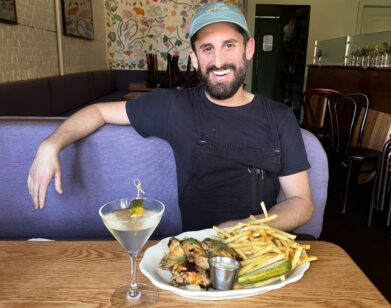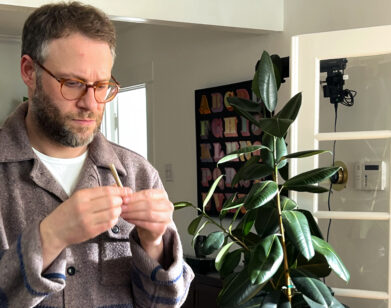LESSON
Chef Adam Leonti Shows Us How to Make His Twist on an Italian Classic
We’re coming up on that time of year when one logs onto Instagram and finds that no small portion of their friends have suddenly absconded to Italy. But if the country’s native cuisine is what you seek, that won’t be necessary. At Cucina Alba, the restaurant Head Chef Adam Leonti opened in 2022 right off the High Line, guests enjoy what Leonti calls “vacation Italian,” a selection of dishes, rolled out seasonally, inspired by getaways to various corners of the country. A few weeks ago, as New York began to warm up, he invited Interview to the restaurant to walk us through the making of his Raviolo Fornografia, a dish he stumbled upon by repurposing the dough from an herb tart. For Leonti, the author of the book
———
So I created this dish almost by accident, like all the great creations, right? This is a dough that I’ve been making that uses polenta, semolina, 00 flour, water, and olive oil, which I’ve used to make an herb tart. It’s a very traditional dish filled with a bunch of herbs and potatoes and zucchini. And then, you bake it. I had extra dough and then all of a sudden I just thought, “What if we put a big chunk of cheese in it and made it look like a ravioli?” Or raviolo, rather.
So you put a big piece of cheese inside the dough and then bake it so it’s crispy. Basically, it’s really more of a cheese tart made to look like a raviolo. There’s four on a plate and then we finish it with some butter, parmesan, and an aged balsamic. Basically, you’re looking at about 65% water, 10% bread flour, about 10 to 20% polenta, another 10 to 20% of semolina, maybe about 5 to 10% olive oil—and that’s what makes this dough. So when you bake it, it almost turns into something like a cracker.
We’ll run the dough through the sheeter, get it nice and thin. I used to use this machine without this guard, and it was a lot easier. [Laughs] At the end of the day, it’s about a gooey mozzarella cheese that pulls when you bite into it—but it’s made with whole foods and real ingredients. I also thought this was a good thing to make you because this is our house specialty. It’s not something that you can order somewhere else. But once you see it made, you could totally make it yourself.
I think the beauty of Italian food in general is that they separate everything. Unlike a composed dish that’s like, a steak with the potato and green beans on the plate, Italian people like to put the potato on the side and the green bean on the side. I think a lot of New York restaurants have a hard time getting away with telling people how to eat, because New Yorkers are pro eaters. Who wants to have someone tell you how to do anything, right?
However, I do think it makes for a nice meal, so how do we get that message across? Let’s talk about pasta, because that’s the thing we know you’re more than likely going to get at the restaurant. Some of those pastas don’t necessarily sit all that well next to each other, you know? A gentle ravioli in a soft butter shouldn’t be next to a tomato spaghetti on the same table, and there are reasons why those things don’t work out all that well. So we like to have a little bit of structure. With the entrees, we have an opportunity to serve vegetables and meat that is truly well-sourced, a la carte.
For instance, you’ve got an aged steak. Someone already did all the finesse in the field. You love the animal, give it a great diet, treat it right. And then, when it gets butchered, you process it. It then goes into an aging room for two months, where the marbling is there before it gets brought to us. And then we provide lots of vegetable options, because who’s to say that carrots go better with beef than fennel? I never understood that. Sometimes, sure, certain things go together, like chocolate and peanut butter, but in this scenario, you look at our little garden of things that we have here and you pick what to eat with your protein. So it’s important to us that the pasta be separated out.
Now we’re ready. We stretched out our dough. Give each piece enough space between each other. You’d spoon out your filling, give it a nice little spray. A lot of people try to egg-wash on dough, but water is really the best. You don’t need to mess around with eggs and all that stuff. Also, what’s cool is that the polenta puts these little tiny holes in it, which actually vents it while they bake, which is nice.
This dough was gifted to me from a mentor of mine that I worked for in Italy. Now, we’ll just put it in the oven and bake it for about five to seven minutes. We’ll melt some butter. It’s so fun and it’s the simplest thing. Because this is crispy, you get to see what it looks like before it cooks it all away. Now that it’s baked, we’ll drizzle it with this 12-year-old balsamic. And as for plating, I always say, “Just put it on a plate.” There’s a great line in Richard Olney’s book on French food. It says, “Good food garnishes itself.” There’s nothing to do. It will always look beautiful.

